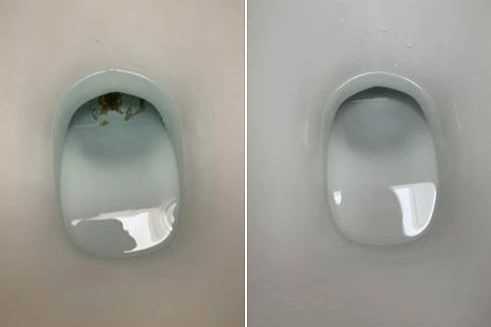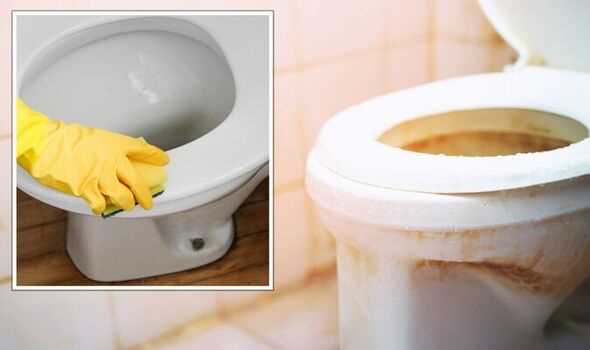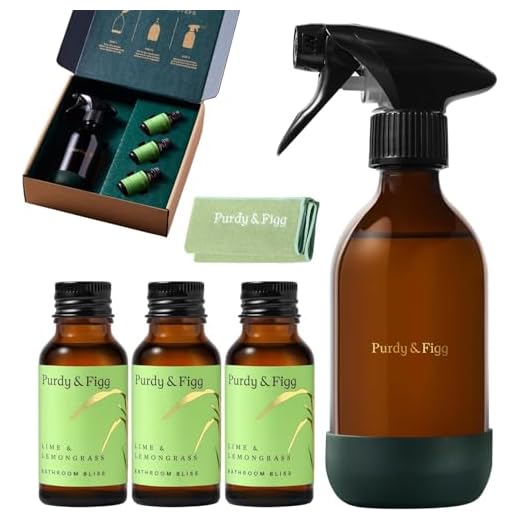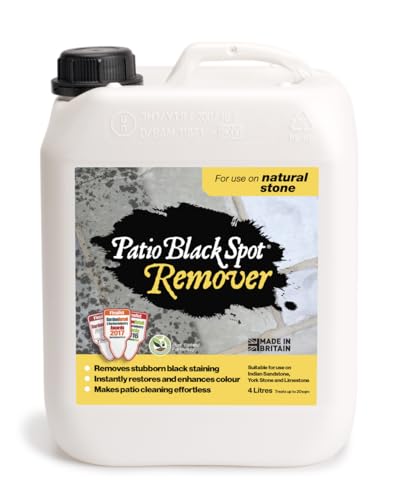




When it comes to cleaning the toilet, many people automatically reach for bleach. It’s a powerful cleaner that can effectively remove stains and kill bacteria. However, there is a question that often arises – does bleach damage toilet bowls?
The answer to this question is both yes and no. Bleach can indeed cause damage to toilet bowls if used incorrectly or excessively. The high concentration of chemicals in bleach can weaken the surface of the bowl, leading to discoloration or even cracks. Over time, this damage can become more noticeable and difficult to repair.
However, it’s important to note that if used properly, bleach can be a safe and effective cleaning agent for toilet bowls. Diluting bleach with water and using it in moderation can minimize the potential for damage. Additionally, using a soft brush and avoiding abrasive materials can also help prevent scratching or other forms of damage.
Expert advice suggests that it’s best to use bleach sparingly and as a last resort when cleaning your toilet bowl. Regular maintenance and proper cleaning techniques, such as using mild cleaners or vinegar solutions, can help keep your toilet bowl clean and in good condition without causing harm.
In conclusion, while bleach can potentially damage toilet bowls if used incorrectly, it can still be a useful tool when used with caution. By following expert advice and practicing proper cleaning techniques, you can keep your toilet bowl clean and well-maintained without the worry of bleach-related damage.
Does Bleach Damage Toilet Bowls? Expert Advice and Solutions
One common question among homeowners is whether or not bleach can damage toilet bowls. Bleach is a powerful cleaning agent that is often used to remove stains and kill bacteria in the bathroom. However, its strong chemical properties can have a negative impact on certain types of materials, including toilet bowls.
Effects of Bleach on Toilet Bowls
Bleach, particularly when used in high concentrations or left on surfaces for extended periods, can cause damage to toilet bowls. The main concern is the potential for the bleach to break down the protective layer of the porcelain or other material that coats the inner surface of the bowl. This can lead to fading, discoloration, and even cracks or chips in the bowl.
Expert Advice and Solutions
If you want to use bleach to clean your toilet bowl without the risk of damage, here are some expert tips and solutions:
- Dilute the Bleach: To minimize the potential damage, always dilute bleach with water before using it in the toilet bowl. A general guideline is to mix one part bleach with ten parts water. This will help reduce the strength of the bleach and lessen the risk of damage.
- Apply and Rinse Quickly: When using bleach in the toilet bowl, it’s important to apply it and rinse it off as quickly as possible. Leaving the bleach sitting in the bowl for too long can increase the chances of damage. Use a toilet brush to scrub the bowl immediately after applying the diluted bleach and then flush the toilet to rinse it thoroughly.
- Use Alternatives: If you are concerned about using bleach altogether, there are alternative cleaning products available. Look for toilet bowl cleaners that are specifically formulated to be safe for use on all types of toilet bowls. These products are often bleach-free but still provide effective cleaning results.
It’s also essential to read and follow the instructions on the bleach or cleaner product you are using. Some manufacturers may provide specific recommendations or warnings regarding their products’ use on toilet bowls.
In Summary
While bleach can be an effective cleaner for toilet bowls, it does have the potential to cause damage if not used correctly. Diluting the bleach, applying and rinsing quickly, and using alternative cleaners are some of the recommended solutions to mitigate the risk of damage. By following these expert tips and solutions, you can keep your toilet bowl clean and in good condition.
Understanding the Effects of Bleach on Toilet Bowls

Bleach is a commonly used cleaning agent for toilet bowls, and it is highly effective in removing stains and killing bacteria. However, it is important to understand the effects that bleach can have on toilet bowls.
1. Discoloration
Bleach contains chemicals that can cause discoloration on certain surfaces, including toilet bowls. Over time, frequent use of bleach can lead to a yellow or brownish stains on the porcelain surface of the toilet bowl.
2. Damage to Enamel
Toilet bowls are typically coated with a layer of enamel to protect the porcelain surface. However, bleach can gradually wear down this enamel layer and cause it to become weakened. This can lead to the formation of cracks or chips in the toilet bowl, making it more prone to damage and staining.
3. Corrosion of Metal Parts
Many toilet bowls have metal parts such as the flush handle or hinges. Bleach is a corrosive substance that can cause damage to these metal components over time. It can lead to rust formation, weakening of the metal, and potentially causing parts to break or malfunction.
4. Disruption of the Toilet Flushing System
Bleach can also have an impact on the functionality of the toilet flushing system. The chemicals in bleach can cause rubber or plastic components such as flapper valves or gaskets to deteriorate, leading to leaks or inconsistent flushing.
5. Environmental Impact
It is important to note that bleach is a strong chemical that can have negative effects on the environment. When flushed down the toilet, bleach can make its way into water sources and harm aquatic life.
| Effects | Explanation |
|---|---|
| Discoloration | Bleach can cause yellow or brownish stains on the toilet bowl surface. |
| Damage to Enamel | Bleach can wear down the enamel layer, leading to cracks or chips. |
| Corrosion of Metal Parts | Bleach can cause rust formation and weaken metal components. |
| Disruption of Flushing System | Bleach can deteriorate rubber or plastic parts, leading to leaks or inconsistent flushing. |
| Environmental Impact | Bleach can harm aquatic life when flushed into water sources. |
Considering these effects, it is recommended to use bleach sparingly and to follow the manufacturer’s instructions. It may also be beneficial to explore alternative cleaning products that are less harsh on toilet bowl surfaces and the environment.
Expert Advice: How to Safely Use Bleach for Cleaning
1. Read and Follow Instructions
Before using bleach, it is important to carefully read and follow the instructions provided on the product’s label. Different bleach products may have varying concentrations and recommended usage guidelines.
2. Dilute Bleach Properly
Bleach is a highly concentrated chemical, and using it undiluted can be harmful to both the surfaces you are cleaning and yourself. It is recommended to dilute bleach with water before using it for cleaning. The exact ratio of bleach to water will depend on the specific product and the cleaning task at hand. In general, a ratio of one part bleach to nine parts water is a safe starting point.
3. Use Protective Equipment
When working with bleach, it is important to protect yourself by wearing appropriate personal protective equipment (PPE). This may include gloves, safety goggles, and a mask to avoid inhaling any fumes. Make sure to handle bleach in a well-ventilated area to minimize exposure to the chemical.
4. Test on a Small Area
Before applying bleach to a large area, it is recommended to test it on a small, inconspicuous area first. This will help you determine how the surface reacts to bleach and if any damage occurs. Some surfaces may be more sensitive to bleach, so it is always best to proceed with caution.
5. Avoid Mixing Bleach with Other Products
Bleach should never be mixed with other cleaning products, as this can result in the release of toxic gases. Avoid using bleach alongside ammonia-based cleaners or any product containing acids. Always use bleach as a standalone cleaner and store it separately from other cleaning supplies.
6. Properly Ventilate the Area
To minimize exposure to bleach fumes, it is important to ensure proper ventilation in the area where you are cleaning. Open windows and doors, or turn on fans to encourage fresh air circulation. This will also help the bleach evaporate more quickly and reduce lingering odours.
7. Follow Disposal Guidelines
After using bleach for cleaning, make sure to dispose of any leftover diluted bleach properly. Follow the disposal guidelines provided by your local authorities. Do not pour bleach down drains or into the environment, as it is a hazardous substance that can be harmful to aquatic life.
8. Store Bleach Safely
When storing bleach, make sure to keep it in a cool, dry place away from direct sunlight. Keep it out of reach of children and pets. It is also a good idea to label the container correctly to avoid confusion with other cleaning products.
By following these expert tips, you can safely and effectively use bleach for cleaning without causing damage or harm.
Common Issues Caused by Bleach and Their Solutions

Toilet Bowl Discoloration
One common issue caused by bleach is toilet bowl discoloration. Bleach can react with minerals in the water or other substances in the toilet bowl, causing brown or yellow stains. To solve this problem, you can try the following:
- Scrub the toilet bowl regularly with a toilet brush and a mild cleaner. This can help remove any stains caused by bleach.
- Use a toilet bowl cleaner specifically designed to remove stains. These cleaners often contain chemicals that can effectively break down and remove bleach stains.
- Consider using a non-chlorine bleach alternative, such as hydrogen peroxide or vinegar, which are less likely to cause discoloration.
Toilet Bowl Damage
Bleach can also cause damage to toilet bowls, especially if they are made of certain materials like enamel or marble. The harsh chemicals in bleach can corrode or etch the surface, leading to permanent damage. Here are some solutions:
- Avoid using bleach directly on the toilet bowl. Instead, dilute it with water or use a toilet cleaner that contains bleach.
- Consider using a toilet cleaner that is specifically formulated for the material your toilet bowl is made of, such as an enamel-safe or marble-safe cleaner.
- If your toilet bowl is already damaged, you may need to consider professional repair or replacement.
Health and Safety Concerns
Bleach can present health and safety concerns if not used properly. Here are some precautions and solutions to ensure your safety:
- Always read and follow the instructions on the bleach packaging.
- When using bleach, ensure proper ventilation in the bathroom to avoid inhaling fumes.
- Wear gloves and protective eyewear when handling bleach to protect your skin and eyes.
- Keep bleach out of reach of children and pets.
- If you accidentally ingest bleach or experience any adverse effects, seek medical attention immediately.
Environmental Impact
Another issue caused by bleach is its negative impact on the environment. Bleach can be toxic to aquatic life and contribute to water pollution. Consider these solutions to reduce the environmental impact:
- Use bleach sparingly and only when necessary.
- Consider using alternative cleaning products that are more environmentally friendly.
- Dispose of bleach properly by following local guidelines for hazardous waste disposal.
Alternatives to Bleach for Toilet Bowl Cleaning
If you prefer to avoid using bleach for cleaning your toilet bowl, there are several alternative products and methods you can try. These alternatives are effective at removing stains, fighting bacteria, and deodorizing your toilet bowl.
1. Vinegar and Baking Soda
Mixing vinegar and baking soda creates a powerful cleaning solution that can be used to clean your toilet bowl. Start by pouring about a cup of vinegar into the toilet bowl and let it sit for a few minutes. Then, sprinkle baking soda over the vinegar and scrub the bowl using a toilet brush. Rinse thoroughly with water.
2. Borax
Borax is a natural mineral compound that can be used as an alternative to bleach for toilet bowl cleaning. Sprinkle about half a cup of borax into the toilet bowl and let it sit for at least 30 minutes. Scrub the bowl with a toilet brush and then flush the toilet to rinse away the borax.
3. Hydrogen Peroxide
Hydrogen peroxide is a powerful disinfectant and stain remover. Pour about half a cup of hydrogen peroxide into the toilet bowl and let it sit for 20-30 minutes. Scrub the bowl with a toilet brush and flush to rinse.
4. Citric Acid
Citric acid is a natural cleaning agent that can effectively remove stains and mineral deposits from toilet bowls. Mix a tablespoon of citric acid with a cup of water and pour it into the bowl. Let it sit for at least 30 minutes, scrub with a toilet brush, and then flush.
5. Commercial Non-Bleach Toilet Bowl Cleaners

There are many non-bleach toilet bowl cleaners available on the market. These cleaners are specifically formulated to remove stains, kill bacteria, and deodorize without the use of bleach. Read the labels and choose a product that suits your needs.
Remember to always follow the instructions on the product labels and wear gloves when using any cleaning solution in your toilet bowl. With proper maintenance and regular cleaning, you can keep your toilet bowl clean and fresh without the need for bleach.
Tips for Maintaining a Clean and Damage-Free Toilet Bowl
To keep your toilet bowl clean and in good condition, follow these simple tips:
1. Choose a Mild Cleaner
When cleaning your toilet bowl, opt for a mild cleaner that is specifically designed for this purpose. Avoid using strong bleach-based cleaners, as they can damage the porcelain surface of the toilet bowl over time.
2. Regular Cleaning
Make it a habit to clean your toilet bowl regularly to prevent the buildup of dirt, stains, and bacteria. Use a toilet bowl brush and cleaner to scrub the inside of the bowl, including under the rim and around the waterline.
3. Use Gentle Scrubbing Tools
To avoid scratching the surface of your toilet bowl, use gentle scrubbing tools. A soft-bristled toilet brush or a sponge can effectively remove stains without causing damage.
4. Watch Your Water Level
Ensure that the water level in your toilet bowl is not too high, as this can lead to water overflow and potential damage to the bowl. Adjust the water level if necessary by adjusting the float valve or water level adjustment screw.
5. Avoid Harsh Chemicals

Avoid using harsh chemicals or abrasive cleaners in your toilet bowl, as they can cause damage and wear down the porcelain surface. Stick to mild cleaners and natural alternatives.
6. Use Toilet Bowl Tablets Wisely
If you choose to use toilet bowl cleaning tablets, make sure to follow the manufacturer’s instructions and use them sparingly. Excessive use of these tablets can lead to damage to the bowl and other plumbing components.
7. Clean the Tank Regularly
In addition to cleaning the bowl, it’s important to clean the toilet tank regularly. Buildup of minerals and bacteria can occur in the tank, which can then affect the cleanliness of the bowl. Follow the manufacturer’s instructions for cleaning the tank and its components.
8. Watch for Leaks
Regularly check for leaks around the toilet bowl and fix them promptly. Leaks can lead to water damage and staining, which can be difficult to remove and may cause long-term damage to the bowl.
9. Avoid Using Excessive Force
When cleaning or unclogging your toilet bowl, avoid using excessive force or aggressive techniques. This can cause damage to the bowl, trap, or other components of the toilet. Instead, use gentle but effective cleaning methods.
10. Regular Maintenance
Perform regular maintenance tasks to keep your toilet bowl in good condition. This may include tightening any loose bolts, replacing worn-out parts, and checking for any signs of damage or wear.
By following these tips, you can maintain a clean and damage-free toilet bowl that will last for years to come.
FAQ
Will using bleach damage my toilet bowl in the long run?
No, using bleach to clean your toilet bowl will not damage it in the long run. Bleach is a strong disinfectant and cleaner that can effectively remove stains and kill germs. However, it is important to use bleach in moderation and follow the instructions on the label to avoid any potential damage.
How often should I use bleach to clean my toilet bowl?
It is recommended to use bleach to clean your toilet bowl once or twice a week. Using bleach too frequently can potentially damage the toilet bowl surface. Additionally, make sure to use the proper amount of bleach and dilute it according to the instructions on the label.
What should I do if I accidentally spill bleach on my toilet bowl?
If you accidentally spill bleach on your toilet bowl, you should immediately rinse it off with water. Bleach can be corrosive if left on the surface for too long, so it is important to act quickly. Make sure to wear gloves and follow proper safety precautions when dealing with bleach.
Are there any alternatives to using bleach to clean my toilet bowl?
Yes, there are alternatives to using bleach to clean your toilet bowl. You can use vinegar, baking soda, or hydrogen peroxide as natural and effective cleaners. These substances can help remove stains and kill germs without the potential damage that bleach can cause. Additionally, using a toilet brush and regular cleaning can help maintain the cleanliness of your toilet bowl.













